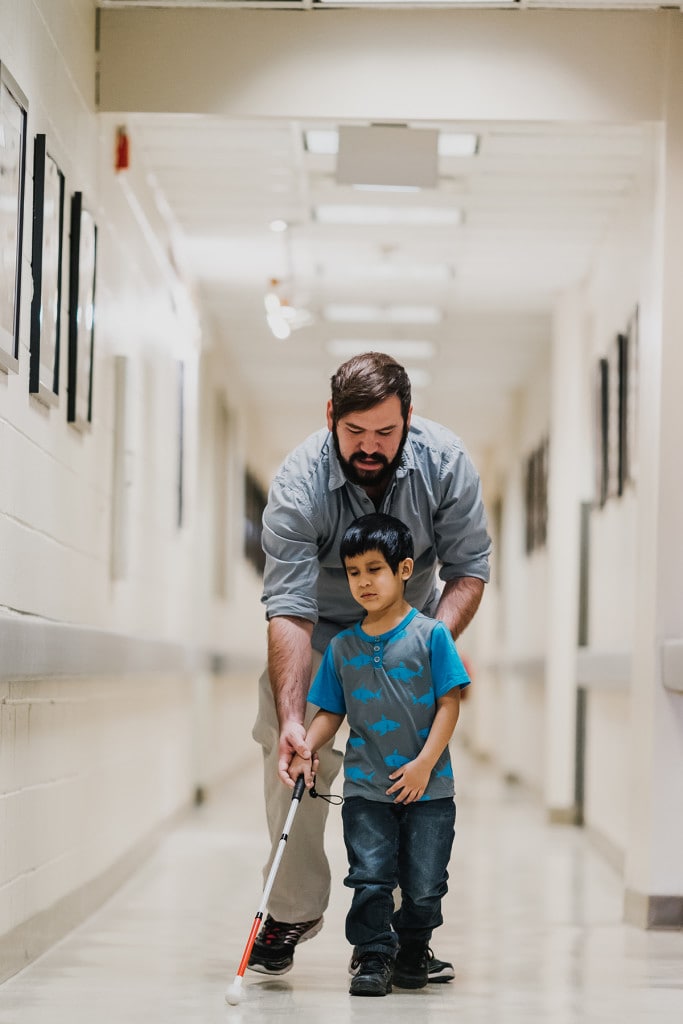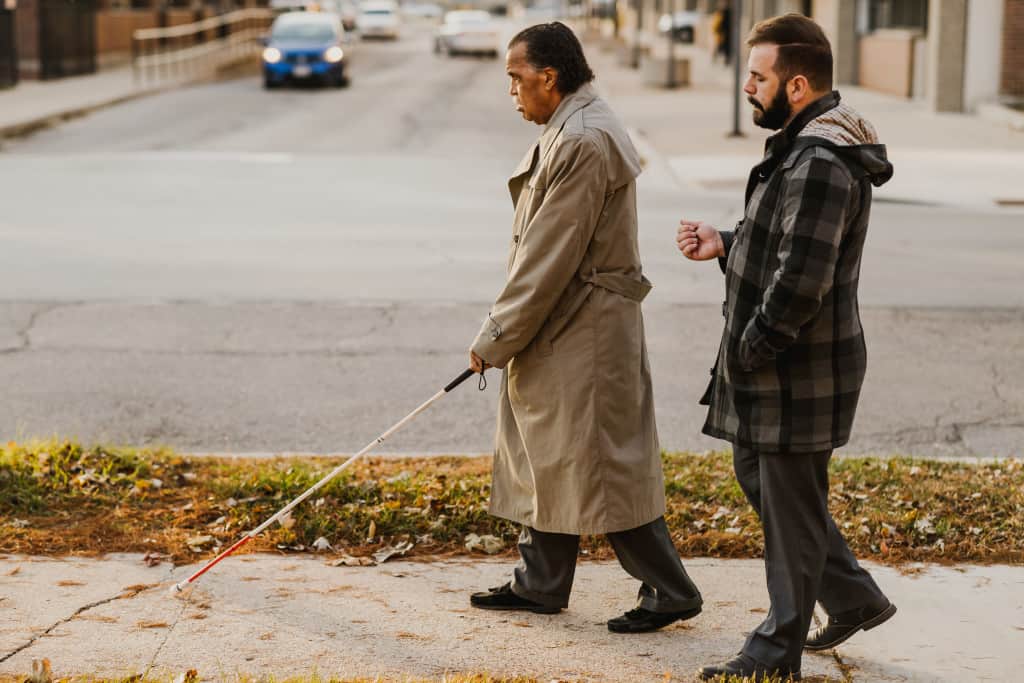Happy White Cane Safety Day!
Today The Chicago Lighthouse joins in the celebration of White Cane Safety Day. Signed into law by President Lyndon B. Johnson in 1964, this day recognizes the independence and achievements of individuals who are blind or visually impaired. It also serves as an important reminder about educating the public about the importance of the white cane in helping people who are blind or visually impaired navigate their surroundings.
Orientation and Mobility Instructor Jaret Bozigian helps Chicago Lighthouse clients, ranging from young children to seniors, to maximize their white cane skills in order to travel safely and independently. According to Jaret, the white cane has three primary functions that help support the safety and independence of its users: obstacle detection, drop-off detection and identification.
Obstacle detection ensures that an individual becomes aware of anything in their path that may cause harm to them if left undetected, such an object in the middle of a walkway. Drop-off detection helps white cane users feel any sort of drop-off, such as a set of stairs or a curb.
The third function of a white cane is to identify an individual with a visual impairment. “When people have a white cane it helps identify them as blind or visually impaired. It can allow drivers and other people to be more courteous, such as giving the white cane user more space when they’re walking around. When people see the white cane it kind of fills in a blank without having to have a conversation. It is the international symbol for blindness and low vision.”
To help ensure that individuals who are blind or visually impaired are using their canes safely and effectively for independent travel, Jaret shares his top safety tips:
Cane Grip
The cane should be gripped with a closed fist and held out, with the cane extended forward. This ensures that an individual will get full coverage of their environment with the cane.
Cane Range
The cane range should go from two inches outside of either shoulder. It should be swept back and forth or tapped back and forth covering your whole body and then two inches outside on either end. Most people’s shoulders are wider than their feet, so you want to make sure that area is being protected.
Cane length
In order for a cane to be effective it has to be a certain length, and that length is dependent on a person’s height and how fast they walk. A cane of an appropriate length should measure from the floor up to the crook of one’s underarm.
The Chicago Lighthouse wishes everyone a happy White Cane Safety Day and remains committed to supporting the independence of individuals who are blind or visually impaired!




